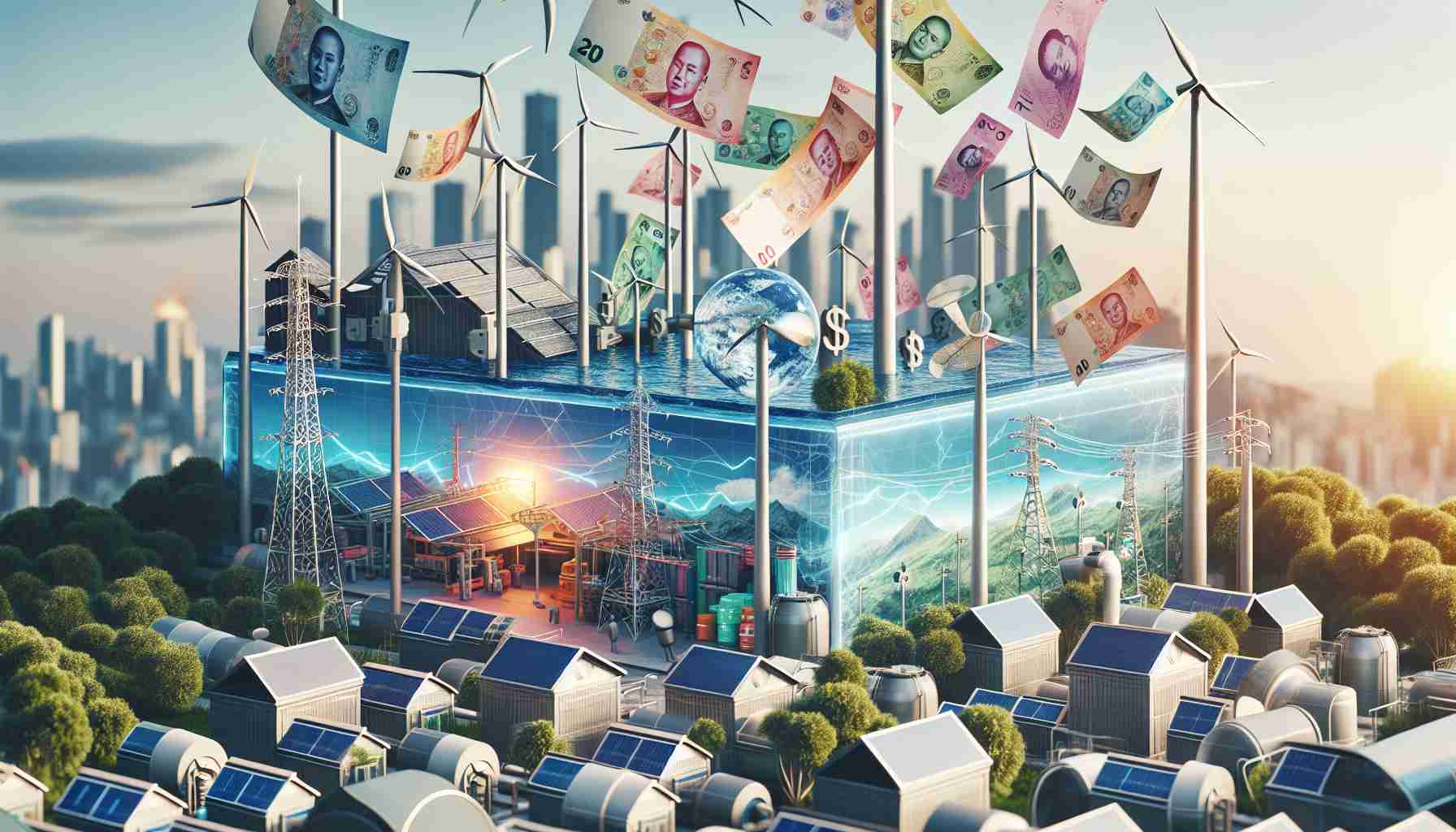Innovative Partnership to Boost Renewable Energy Initiatives
A remarkable collaboration has emerged in the renewable energy landscape as British International Investment (BII) and the Dutch entrepreneurial development bank FMO team up with Swiss firm SUSI Partners to establish a groundbreaking renewable energy platform named Sustainable Asia Renewable Assets (SARA).
The initiative, backed by the Southeast Asia Energy Transition Fund (SAETF) which recently garnered $139 million in financial commitments, aims to significantly enhance renewable energy capacities across the region. Central to this venture is Vietnam’s Dam Nai wind farm, envisioned as the primary asset for the platform.
BII and FMO have notably committed $70 million and $50 million, respectively, driving the SAETF’s total from $120 million to an impressive $259 million. This innovative approach is designed to mitigate early-stage development risks in renewable projects through a collaborative platform financing model.
SARA will be established from the ground up, with plans to recruit a dedicated management team to spearhead the development of the Dam Nai wind farm and to expand the portfolio to a substantial 500MW over the next five to six years.
As Southeast Asia races towards its energy transition goals, this strategic partnership seeks to attract much-needed commercial investments by addressing the inherent risks that deter traditional investors, ultimately paving the way for a greener future in the region.
Implications of Sustainable Energy Partnerships in Southeast Asia
The formation of the Sustainable Asia Renewable Assets (SARA) platform represents a pivotal moment not just for renewable energy but for the broader fabric of society and the global economy. As nations strive to transition from fossil fuels, this initiative underscores a significant shift towards collaborative financing, which could redefine how developing regions attract investment. The commitment of leading financial institutions indicates growing recognition of the urgent need for diversified energy solutions. This could catalyze similar partnerships across other nascent markets, promoting local energy security and reducing dependence on imported energy sources.
Moreover, the environmental ramifications of SARA’s initiative are profound. By prioritizing renewable infrastructure, such as the Dam Nai wind farm, this partnership contributes to reducing greenhouse gas emissions. The broader adoption of wind energy technology could position Southeast Asia as a leader in sustainable practices, potentially echoing positive effects in surrounding regions as they emulate these initiatives.
Looking ahead, we can anticipate future trends that favor integrated energy solutions, with partnerships like SARA leading the way. The rigorous management and expansion goals set forth signal a potential shift in how energy is conceptualized—integrating economic viability with ecological responsibility. As these platforms flourish, they may also foster innovation in clean technology, suggesting a long-term significance that could redefine energy generation not just locally, but globally.
Revolutionizing Renewable Energy: The SARA Initiative
Overview of the Sustainable Asia Renewable Assets (SARA) Initiative
A groundbreaking partnership between British International Investment (BII), Dutch entrepreneurial development bank FMO, and Swiss firm SUSI Partners has ushered in a new era for renewable energy in Southeast Asia. This innovative collaboration has given rise to the Sustainable Asia Renewable Assets (SARA) platform, aimed at significantly boosting renewable energy capacities in the region, particularly focusing on Vietnam’s Dam Nai wind farm.
Financial Backing and Goals
The initiative is supported by the Southeast Asia Energy Transition Fund (SAETF), which recently attracted $139 million in financial commitments, raising its total to an impressive $259 million. BII and FMO have made significant contributions of $70 million and $50 million, respectively. This financial backing is crucial for mitigating early-stage development risks in renewable projects, enticing traditional investors who might have been hesitant due to past uncertainties.
Project Features and Development Plans
The SARA platform is designed to manage a comprehensive portfolio of renewable energy projects, with plans to expand the existing assets to a total capacity of 500MW over the next five to six years. This ambitious target underscores the potential growth in the renewable energy sector within Southeast Asia.
Use Cases and Market Trends
The SARA initiative isn’t just about developing wind farms; it represents a strategic approach to renewable energy that aims to address critical gaps in investment. The platform’s design to mitigate risks can serve as a model for future projects in the region, potentially attracting more private sector investment and fostering a robust renewable energy market.
Sustainability and Future Predictions
As the world shifts towards sustainable energy solutions, the SARA initiative aligns perfectly with global trends. The focus on renewable resources is expected to reduce dependence on fossil fuels, lower carbon emissions, and create a cleaner environment. According to market analysts, initiatives like SARA could help Southeast Asia achieve its energy transition goals by not only increasing renewable energy generation but also promoting economic growth through job creation in the renewable sector.
Pros and Cons
Pros:
– Significant financial backing reduces risk for investors.
– Focus on substantial renewable capacity expansion.
– Emergence of a collaborative financing model that encourages participation.
Cons:
– Initial high capital requirements may deter some investors.
– Potential regulatory hurdles in different Southeast Asian countries.
– Long timeline for achieving full project capacity.
Security Aspects and Innovations
Security in renewable energy projects is paramount, especially given the high levels of investment involved. The collaborative nature of the SARA platform is designed to enhance governance and oversight, ensuring that investments are safeguarded against potential operational disruptions. Innovative financial models being tested through SARA could set new benchmarks for future renewable energy financing globally.
Conclusion
The Sustainable Asia Renewable Assets (SARA) initiative stands out as a transformative approach to improving renewable energy capacities in Southeast Asia. With significant financial backing and a focus on mitigating investment risks, it is poised to not only develop critical infrastructure but also set a precedent for future renewable energy projects in the region.
For more information about renewable energy initiatives and trends, visit International Investment.












